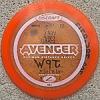-
Posts
100 -
Joined
-
Last visited
Reputation Activity
-
 MJSfoto1956 got a reaction from Ski in Luminosity masks in Affinity Photo
MJSfoto1956 got a reaction from Ski in Luminosity masks in Affinity Photo
Because AP has advanced layer blend options that are not available in Photoshop, there is no need for traditional "luminosity masks". One can very precisely restrict any filter or layer to ANY range of luminosity with any kind of falloff (be it hard or soft, shallow or steep). Below is a screenshot that demonstrates how to do luminosity masks the fast and easy way using blend options -- in this case restricting the levels layer to only affect the midtones. This should serve as a reminder that if you are going to use a new tool, it pays to avoid trying to fit a square peg into a round hole! YMMV
-
 MJSfoto1956 reacted to MEB in Easiest way to create yin-yang/paisley shapes in Photo?
MJSfoto1956 reacted to MEB in Easiest way to create yin-yang/paisley shapes in Photo?
If you continue the file attached in the previous post you will l end up with separate elements.
- open the file
- select the white half circle and the small white circle (counting from bottom) in the layers panel
- add them (menu Layer ▸ Geometry ▸ Add)
- select the black half circle and the small black circle (counting from bottom) in the layers panel
- add them (menu Layer ▸ Geometry ▸ Add)
- select the resulting white shape and the duplicate black circle and perform a subtract boolean operation (menu Layer ▸ Geometry ▸ Subtract)
- finally select the resulting black shape and the duplicate white circle and perform a subtract boolean operation (menu Layer ▸ Geometry ▸ Subtract)
Here's the finished file:
yin-yang (finished).afdesign
-
 MJSfoto1956 got a reaction from Leigh in Easiest way to create yin-yang/paisley shapes in Photo?
MJSfoto1956 got a reaction from Leigh in Easiest way to create yin-yang/paisley shapes in Photo?
four circles made with the eclipse tool, one with a partial mask. The two smaller ones are on top. See attached photo.
M
-
 MJSfoto1956 reacted to R C-R in Struggling to get the Colour Replacement Tool to work
MJSfoto1956 reacted to R C-R in Struggling to get the Colour Replacement Tool to work
The Color Replacement tool seems to me to be mis-labeled, because from what the AP Help topic Replacing colors by brush says about it, it is actually a hue replacement tool:
"The Color Replacement Brush Tool takes a sample of the color under the cursor when you begin to paint, and will replace all closely matching colors along the stroke with the current Foreground color. The targeted color's hue will be replaced with the current Foreground color's hue, while retaining lightness values of the original pixels."
-
 MJSfoto1956 reacted to R C-R in Affinity Photo - Photoshop plugins???
MJSfoto1956 reacted to R C-R in Affinity Photo - Photoshop plugins???
1. Open Affinity Photo
2. From the Help menu, select the first item, "Affinity Photo Help."
3. After the help window opens & stabilizes (you see the Affinity logo in the window), type "plugins" in the search field in the top right corner of the window.
4. Press return.
5. Wait for the help topics to appear, then click on the first item shown, "Using Plugins."
-
 MJSfoto1956 reacted to Fixx in straightening the horizon in Affinity Photo
MJSfoto1956 reacted to Fixx in straightening the horizon in Affinity Photo
I wish there were some more precise tool or procedure for straightening horizon. In PS you could draw a metering line along horizon and its value would automatically copy to arbitrary rotate dialog. That feature has been available for ages though not well known. I guess nowadays there are simpler ways in various softwares.
-
 MJSfoto1956 reacted to MEB in Did you know, you can use Artboards in Affinity Photo
MJSfoto1956 reacted to MEB in Did you know, you can use Artboards in Affinity Photo
Hi m-b,
Affinity native file format(s) are compatible between all Affinity apps.
There's no need to create a document in Designer and open it in Photo. You can simply work in Designer as usual and if you need to move everything to Photo (History included) go to menu File ▸ Edit in Photo... The inverse is also true.
-
 MJSfoto1956 reacted to MEB in I'm sure this queston has been asked.....
MJSfoto1956 reacted to MEB in I'm sure this queston has been asked.....
Hi TheRogue,
Welcome to Affinity Forums :)
There will be iOS versions of both Photo and Designer (full apps).
Here's sneak peaks of Designer and Photo running on the iPad.
-
 MJSfoto1956 got a reaction from BatteriesInc in Retouching tutorials?
MJSfoto1956 got a reaction from BatteriesInc in Retouching tutorials?
Is that specific to the Hawaiian version? :P
M
-
 MJSfoto1956 reacted to R C-R in Interface question
MJSfoto1956 reacted to R C-R in Interface question
It is because a neutral, colorless background is required to perceive the colors of an image accurately. This is why, when OS X was first being developed, professional graphics artists requested an alternative to the blue "Aqua" UI theme & Apple added the "Graphite" one still available in System Preferences > General.
-
 MJSfoto1956 reacted to anon1 in Interface question
MJSfoto1956 reacted to anon1 in Interface question
So why then, would we want the program we use to create stunning images to have the polar opposite of stunning as our working space?
- well it´s because you work on the image, not on the program
as you elaborated one is driven towards the high contrast areas so you´re looking at the image you´re editing rather than the interface, this makes for an unobtrusive editing experience
I mostly use shortcuts and have set the UI to monochrome and if the b would not toggle between all brush tools I would not need to look at the icons at all (sigh)
for new users though, it may be more important to focus more on the Ui and therefore have more contrast, I´m not questioning that, just explaining the design decisions for the first release (V2 will have more UI options as announced)
-
 MJSfoto1956 reacted to MEB in Retouching tutorials?
MJSfoto1956 reacted to MEB in Retouching tutorials?
Hi R C-R,
MBd is referring to the Curves Adjustment (the nodes on the graph can't be moved with the arrow keys).
-
 MJSfoto1956 got a reaction from JPWatkins in Using NIK Tools with Affinity Photo
MJSfoto1956 got a reaction from JPWatkins in Using NIK Tools with Affinity Photo
With some back and forth I finally got my Nik filters working. Some of them don't work however. The list of three Nik filters that do work are:
Analog Efex Pro 2
Color Efex Pro 4
Silver Efex Pro 2
For me the key thing was specifying "/" as the support folder. What issues are you having?
M -
 MJSfoto1956 got a reaction from Alfred in Retouching tutorials?
MJSfoto1956 got a reaction from Alfred in Retouching tutorials?
Is that specific to the Hawaiian version? :P
M
-

-
 MJSfoto1956 reacted to MEB in Re: Newbie frustration on use of Inpainting brush etc.,
MJSfoto1956 reacted to MEB in Re: Newbie frustration on use of Inpainting brush etc.,
Hi curiousgirl,
Welcome to Affinity Forums :)
You seem to have the Undo Brush Tool selected, not the Inpainting Brush Tool.
You have to click on the small arrow in the Healing Brush Tool button to access it. See the screenshot below.
-
 MJSfoto1956 reacted to Magnus_vb in Re: Newbie frustration on use of Inpainting brush etc.,
MJSfoto1956 reacted to Magnus_vb in Re: Newbie frustration on use of Inpainting brush etc.,
Hi
It is not necessary to use inpainting, healing etc on the background layer. I always create a new, empty pixel layer above the background. And - important - select "Current layer and below" in the top toolbar.
If I'm not happy with the result, I can just trash that layer ;)
Magnu
-
 MJSfoto1956 reacted to Callum in Affinity Publisher Discontinued?
MJSfoto1956 reacted to Callum in Affinity Publisher Discontinued?
Hi brandbrilliance,
Affinity Publisher is still planned the beta is expected to be available early next year :) We should have more information about it and its features closer to the time!
Edit: Removed requested thread and all the posts asking for the thread to be removed :)
C
-
 MJSfoto1956 reacted to R C-R in Using NIK Tools with Affinity Photo
MJSfoto1956 reacted to R C-R in Using NIK Tools with Affinity Photo
No special permissions need to be set. See MEB's page here for info about which NIK (& other) plugins work with Affinity Photo (which currently is only available for OS X so there is no separate Windows version to be confused about).
MEB's post here explains how to set AP's plugin preferences for use with the NIK collection -- but note that the Plug-in Search Folders path will vary depending on if you have Photoshop installed or not.
This YouTube video explains how to run the installer & set up the AP preferences. It is for a slightly older version of AP but the important parts are the same.
EDIT: More stuff I forgot to mention:
• The NIK plugins are destructive so it is a good idea to duplicate the layer before using one of them.
• If you are still having problems getting them to work after checking out all of the above, please tell us if you have any version of Photoshop installed & if so, which one -- this makes a big difference in the install & setup procedure.
• Depending on if you create an extra install location, you may have installed standalone versions of each of the plugins -- these are apps that can you can run like any other app (independently of Affinity Photo or any other graphics app). This can be very useful if you want to apply any of the NIK plugin effects that don't work in AP.
-
 MJSfoto1956 reacted to Tazintosh in Gradients and Mask
MJSfoto1956 reacted to Tazintosh in Gradients and Mask
Hey MBd.
It's working, thanks.
But… this is insanely unproductive!!! (not your fault of course)
Specially when considering the fact that my gradient tool always reset to "type: none" every time I press G keystroke to use it!!! Non speaking about the color gradient always set from white to grey, no matter I save the defaults.
All of this adds a tremendous amount of clics to get what you need.
I would like to ear a developper opinion on this.
To me, the gradient tool on a mask should by default act as a brush: You can add (overlap) new gradients on your mask at any moment without ever starting from scratch.
When using the gradient tool, any new editing erase all previous work! Most irritating, you can create a gradient mask and paint on it, but not the opposite!
The mask definitely needs some work. Dodge and Burn tool, are still not working on mask :(
-
 MJSfoto1956 reacted to R C-R in Can you create a meme using this software?
MJSfoto1956 reacted to R C-R in Can you create a meme using this software?
Found on the web, white text made more <ahem> impactful with Affinity Photo:
-
 MJSfoto1956 got a reaction from anon1 in Technicolor procedure curiosity
MJSfoto1956 got a reaction from anon1 in Technicolor procedure curiosity
and as a film person mentioned to me, if you wanted a "real" technicolor look, you'd want some minor misalignment, dust spots, and scratches! (the process was prone to all that)
Michael
-
 MJSfoto1956 got a reaction from rui_mac in Select Same
MJSfoto1956 got a reaction from rui_mac in Select Same
I started on the very first version of Illustrator, but quickly switched over a few years later to Freehand. Kept using Freehand until a few years ago when it no longer worked with my latest Macs. Happy to have Designer after all these years.
+1 for following some of Freehand's methods rather than Adobe's.
Michael
-
 MJSfoto1956 reacted to Fixx in 1bit / bitmap mode colour format?
MJSfoto1956 reacted to Fixx in 1bit / bitmap mode colour format?
Ok here it is as request :-)
1-bit bitmaps are used as line art (printed cartoons, illustrations), in silk screen printing and copydot printing systems. They also can (should) be used in coloured comics, where colour plates are overprinted with 1-bit black key colour. Possibly there are other technical purposes also (please list them in this thread!) There is not many apps that support 1-bit but for these uses 1-bit is crucial. 1-bit ensures that black image is NOT rasterized, resulting fuzzy outlines.
Technically 1-bit colour space should be easy feat. You can convert greyscale image to 2 tones (b & w) by thresholding image where light areas convert to white and darker to black.
Threshold should be adjustable so you can select how black or how white image is. (Scanners can scan directly to 1-bit but I think it is much better scan to greyscale and set the threshold manually.)
Alternative to thresholding is dithered image – that is, using something like grain mask or stochastic raster or Atkinson dithering to build the greytones. I am not sure that is so much needed as it is just a special effect (imho). Besides, there is excellent HyperDither app available.
There are some angles that are worth considering. Colour images are best at about 300 dpi when printed. 1-bit images display jaggies in that low resolution, optimum res is 1200-2400 dpi. Ideally 1-bit pixels would map 1-1 to device pixels but above 1200 dpi that is academic.
Details are not needed in that high resolution range, meaning that true 1 pixel resolution is not needed. Resolution is needed for avoiding jaggies, making lines and shapes smooth and clean. That also means that you can upsample image to smooth jaggies out. It is perfectly ok (even when not really hi-fi) to take 300 dpi greyscale image upsample it to 1200 and convert to 1-bit. In photoshop you can upsample in convert dialog (doing 300>1200 AND 8-bit to 1-bit) but I think Photoshop did it wrong and resulted jaggies. I do not know if they have corrected that bug (I use PS CS5). I hope AP would upsample and convert at one go and do it right.
There are some massage you can do to makes 1-bit appearance better. You can play with local contrast to make darker parts lighter so there will be more meaningful black and white areas in image. You can do it manually, or you can use filter (I think high-pass filter is used here?) I am hoping Affinity team would find some quick and easy slider here to apply in convert dialog to reveal more detail in final 1-bit image.
Tools: there is not much need for any special tools. (Or is there?) You can paint pixels black or white and that is it.
One simple effect/usage mentioned also in Affinity forum is that 1-bit image is placed in page layout app and coloured with front and back colour tools.
Last, you might want to consider comix artists' work flow. Old school draw black&white, scan b&w original (1200 dpi) and hand a copy to colour artist for colouring. Colouring is done to separate layer (well, sometimes physical "layer" with brush and paint). Coloured version is set in place in page layout and higher res lineart version is set in register with it and overprinted. Should colour image be CMYK? Or would it better be CMY, resulting brighter colours and less ink coverage, considering there is still black key 1200 dpi image being overprinted? How do you do CMY separation? Also, there are artists that draw with colours so that final artwork is coloured physical art board, and the either take the easy way out and do normal 300 dpi art production, OR filter out the 1200 dpi black key from full colour scanned original (not easy process..). Possibly Affinity can troubleshoot this process to simple and easy colour sep system for comix artists.
-
 MJSfoto1956 reacted to rui_mac in Select Same
MJSfoto1956 reacted to rui_mac in Select Same
FreeHand had all these amazing selection / find & replace options that were SOOOOOOO useful.
I include a PFD with screenshots of all the options.
FH_SELECT_FIND.pdf






